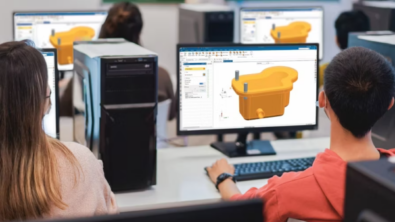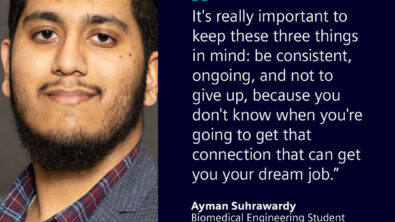A Cambodian Industry 4.0 Talent – Interview

Siemens is supporting Cambodia’s education to train and certify hundreds of students each year from secondary to higher education levels using industry-grade software and curriculum to focus on STEAM (Science,Technology, Engineering, Arts, and Maths), particularly engineering.
Since 2022, Siemens’s academic partner STEAMING Cambodia has been training more than 500 students, resulting in 236 students certified their engineering design skills using Solid Edge software from Siemens. Having Siemens as a big supporter, STEAMING Cambodia created a program called “Academia 4.0 Program” to partner with public high schools, Institute of Technology of Cambodia, National Polytechnic Institute of Cambodia, Cambodia Academy of Digital Technology and other TVET schools to train and certify young Cambodians to unleash their creativity in designing and prototyping engineering projects using teamwork skills, communication skill, project management skill, and 3D printing technology.
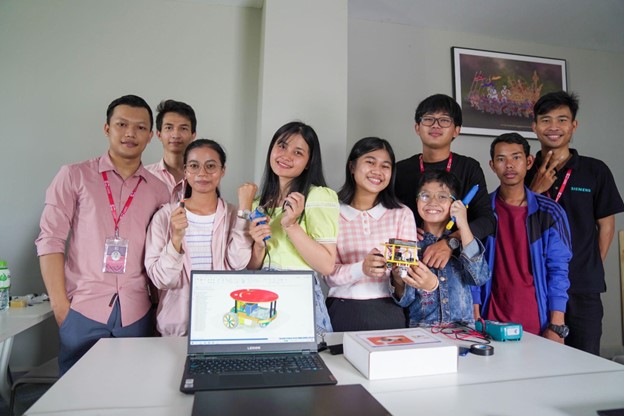
Rady Pheanoukma, a young student from grade 9th, also got selected to join the “Academia 4.0 Program” to explore and develop his talent in engineering design. He’s been through both Solid Edge Associate and Professional Courses since 2022. His time spent with the program enabled him to find his true passion to become a mechanical engineer. From his engineering design learning journey to what he could do, this interview will cover it all.
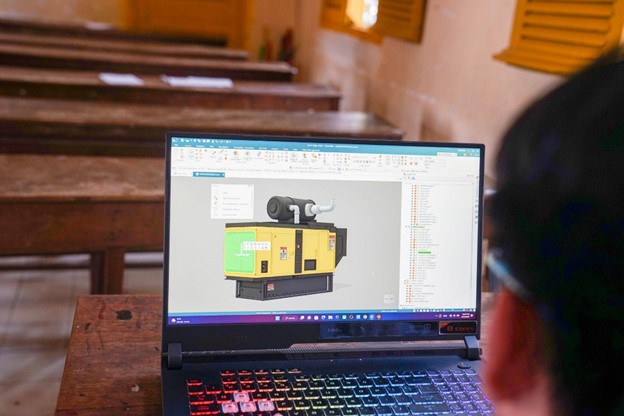
Please tell me about your engineering design learning journey?
My engineering design learning journey started off when I was a kid, because at that time I found engineering fascinating and I started to tinker with things. Then everything changed. When I reached the 6th grade, I started to use a bunch of 3D modeling software and just tried to get myself exposed to the industry-grade software and then till now I started to move to commercial or parametric Computer-Aided Design (CAD) software, for example Solid Edge and NX software. And all of these skills are important to me because it paved a way for me to learn and discover new things and new techniques. So in that way, I can improve myself.
What are the things that you can do with the engineering design skill?
There’re a lot of things that you can do if you have the engineering design skill. For example, you can model everything you need or you require and it can make you see what is beyond your mind. The skill can unleash all the creativity you have in mind to real prototypes and products. As for me, it’s helped me to design a lot of things I am using today. With this skill, I can make things easier.
What have you done so far with the engineering design skill?
My achievements that I have earned so far are all my projects that I have been working on. The first one is a Robotic Arm project. Then I also have a Generator Machine, a Bulldozer, and some hoisting systems. I’ve gained a lot of understanding about Solid Edge. Besides, I’m trying to realize some of the projects that I’m designing to the real prototype, such as SCARA Robot and the Robotic Arm.
And are there any obstacles with what you have done?
Most of the obstacles that I have encountered are mostly technical problems, especially when my computer crashed. For designing, I am okay with both modeling and designing.
Looking toward the future, what will you choose to study at university?
And are there any reasons that motivate you to choose that major?
For me I would choose to study mechanical engineering because I always love engineering and mechanics.
What advice do you have for other Cambodian students if they want to learn and develop their engineering design skill to create things out of their mind?
If they want to learn and develop the skills, I’d recommend our Cambodians to start from when they’re young (aged 5 or 6), exploring the computer and stuff. At these ages, they have more time to explore. Then they can explore 3D Design and 3D printers because these are what we’re gonna use if we want to manufacture stuff. I’d also try to tell them to try more things and explore the things you haven’t known yet and keep going and never give up and listen more than you talk because you will never know if you are right or wrong.
What is your perspective if Cambodia shifts from a user to maker?
I’d share my thoughts of how we can modernize our current teaching at schools. I think we need to be more adapted to new technologies and software. And we can think of how we can have a manufacturing foundation. So first, I think schools should have 3D printers and laser cutters for students to learn to prototype. Then we can get CNC machines and if we want to be more advanced in manufacturing we can have a makerspace.
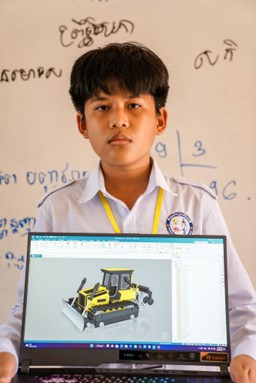
Visit here to learn more about how Siemens support education in Cambodia.
